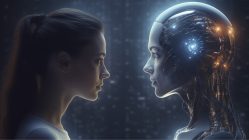NEW DELHI ( PTI): The Supreme Court on Monday directed the Centre to frame a model policy on menstrual leave for women employees by holding consultations with states and other stakeholders.
A bench comprising Chief Justice D Y Chandrachud and Justices J B Pardiwala and Manoj Misra said the issue related to policy and was not an issue for the courts to look into. Moreover, such a decision from a court on granting such leave to women may prove to be counterproductive and “detrimental” to the cause as employers may avoid employing them.
How will the leave encourage more women to be part of the workforce, the court asked the petitioner and said mandating such leave will lead to women “being shunned from the workforce”. “…we do not want that,” the bench said. “This is actually a government policy aspect and not for the courts to look into, ” it said.
“Petitioner says that a representation was submitted to the Centre in May 2023. Since the issues raise multifarious objectives of state policy, there is no reason for this court to intervene in light of our previous order,” it said.
Also read: Bhupesh Sawantdesai joins GreenLine as CHRO
The bench, however, permitted lawyer Rakesh Khanna, appearing for petitioner and lawyer Shailendra Tripathi, to move the secretary of the Ministry of Women and Child Development and Additional Solicitor General Aishwarya Bhati.
“We request the secretary to look into the matter at the policy level and take a decision after consulting all stakeholders and see if a model policy can be framed,” it ordered.
The court made it clear that the consultation process of the Centre will not come in the way of States if they take any steps in this regard.
The top court had earlier disposed of a plea seeking menstrual pain leave for women students and working women across the country.
It had then said that since the issue falls under the policy domain, a representation can be made to the Centre. The senior lawyer said that till date no decision has been taken by the Centre.

Reuters Graphics
Prime Minister Narendra Modi, whose party lost its absolute parliamentary majority in elections last month, having to turn to allied parties to retain power, first won power in 2014, on a promise of creating 20 million jobs a year.
However, he has since faced criticism from analysts and political rivals for failing to deliver.
“The Modi government’s only mission is to make sure youth are jobless,” Mallikarjun Kharge, president of the main opposition party Congress said this week, after the Citibank report reignited the jobs debate in India.
Modi’s party manifesto for this year’s general election promised to create jobs through investments in sectors such as infrastructure, pharmaceuticals and green energy.
But the party’s failure to win an absolute majority on its own was blamed on voters’ disenchantment with lack of jobs and high inflation.
Also read: Workforce growth in Indian online gaming industry rose 20 times from 2018 to 2023
“Yes, there has been an enormous increase in the number of people who are, quote-unquote, employed,” said India’s former chief statistician, Pronab Sen. “But the bulk of this increase has come in agriculture and in casual work.”
Growing farm employment was “extremely regressive” as it went against the nation’s goal of moving more Indians away from agricultural work, he added.
“Look, the question is, do you really believe there’s so much employment happening?” Sen said. “It seems unlikely.”
The debate over India’s employment data was “muddying the water,” he added.
Government data shows just 20.9% of India’s overall workforce earned regular wages in the form of salary, as of 2022/23.
Economists have pointed to weak consumption in the economy, which grew by just 4% in 2023/24, or half the pace of gross domestic product (GDP) which expanded at a world-beating 8.2%.
“We can have disputes on the numbers but ultimately, what we should go by is the outcome,” said Rupa Rege Nitsure, an independent economist.
“If enough employment is being generated, then enough income should get generated and that should get translated into higher consumption at a broad-based level. Why are we seeing so much unevenness in consumption spending?”
Reporting by Shivangi Acharya and Swati Bhat; Editing by Clarence Fernandez
Stay connected with us on social media platforms for instant updates click here to join our LinkedIn, Twitter & Facebook



































